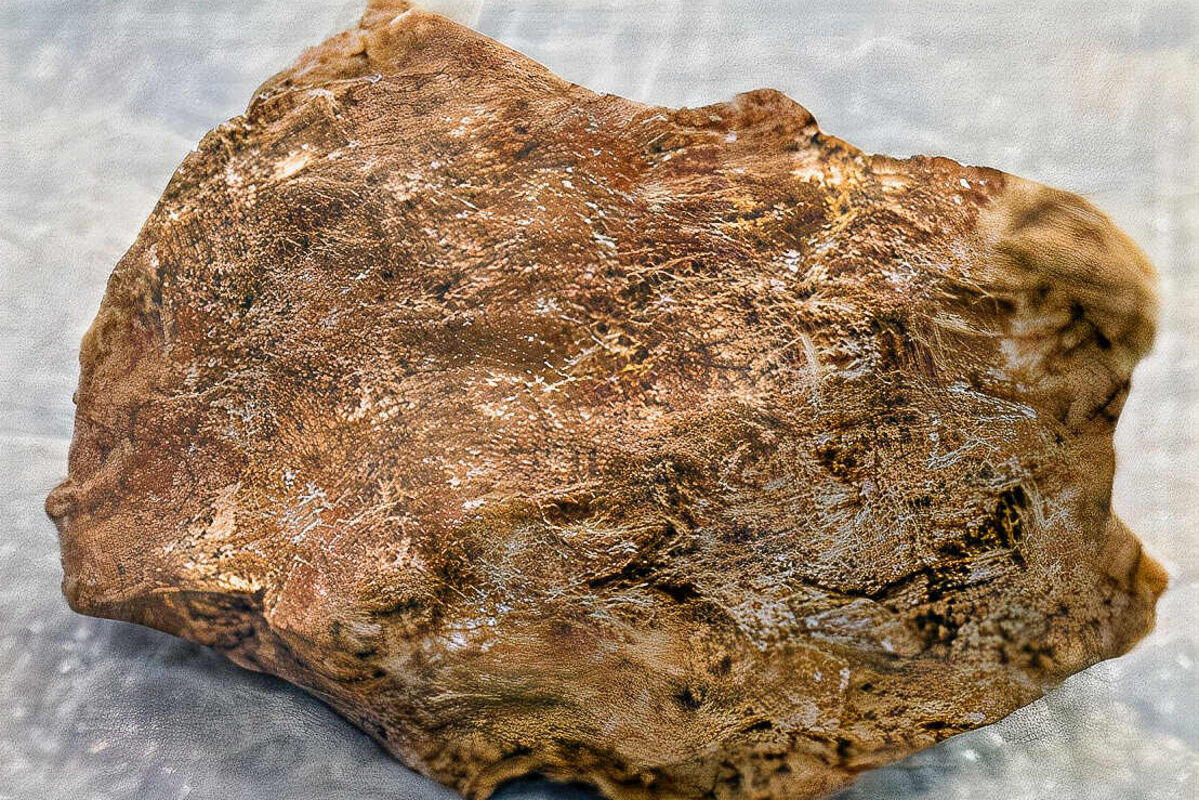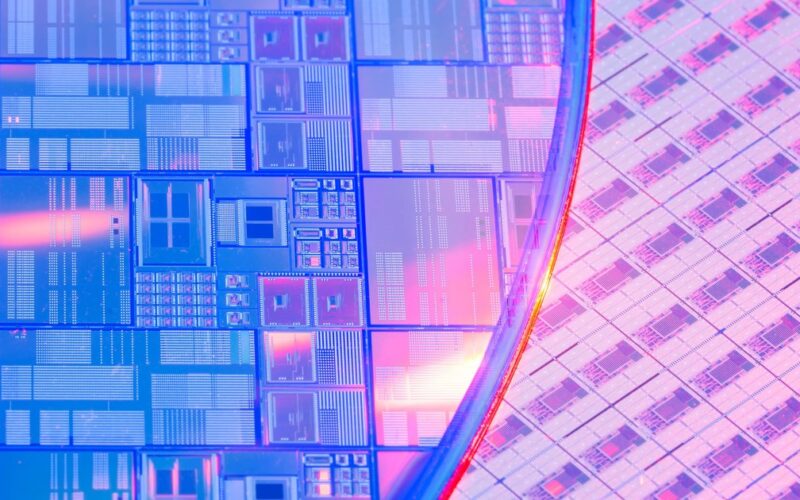This article is an installment of Future Explored, a weekly guide to world-changing technology. You can get stories like this one straight to your inbox every Saturday morning by subscribing above.
It’s 2034. All of your electronic devices, from your EV to your smartphone, charge at lightning speed, and you’re able to take advantage of the latest AI at home and work without any worries about the amount of energy you’re consuming — all thanks to a new generation of microchips that left silicon in the past.
The next semiconductor
Materials can be classified by how well they conduct electricity — currents flow easily through conductors, but not insulators.
Semiconductors fall somewhere in the middle: they can conduct electricity easily, but only under certain conditions. This has made them hugely useful in computing — with semiconductors as the basis for microchips, we can control the flow of electricity through our devices, which makes all of the magic happen.
Silicon has dominated chips and the tech industry since their inception — hence “Silicon Valley” — but it might not be the best material for the tech of the future. To explain why, let’s take a look back at how chips work, today’s tech challenges, and the materials that could replace silicon tomorrow.
Where we’ve been
Microchips are packed with tiny switches, called “transistors,” that translate our keyboard clicks and software programs into the language of computers: binary code. If a switch is on, electricity can flow — that’s a 1. If it’s off, electricity can’t — that’s a 0. Everything modern computers do ultimately comes down to these switches.
For decades, we’ve improved computers by increasing the density of transistors on microchips — while the very first microchip had just one transistor, we can now pack billions of the tiny switches into a chip the size of a fingernail.
That first microchip was made of germanium, but the tech industry soon realized that silicon was a better material for making chips.
The main draw was that silicon is more abundant, which makes it cheaper, but it also has a higher melting point, which means it functions better at higher temperatures. Silicon is also easy to “dope” with other materials, which gives engineers many ways to tweak its conductivity.
Where we are
The classic strategy of continually shrinking transistors in silicon chips to create faster, more powerful computers is starting to fail us.
“Even though silicon works at these extremely small dimensions, the energy efficiency required to do one calculation has been going up, and this makes it highly unsustainable,” Deep Jariwala, an engineering professor at the University of Pennsylvania, told the Wall Street Journal in 2022. “Energy-wise it doesn’t make sense anymore.”
We need to solve this sustainability issue if we want to continue improving our tech without causing further damage to the environment, and the hunt for solutions has some researchers taking a closer look at chips made from semiconducting materials other than silicon, including gallium nitride, a compound made of gallium and nitrogen.
Where we’re going (maybe)
Semiconductors vary in conductivity, largely because of something called the “bandgap.”
While protons and neutrons are packed inside an atom’s nucleus, electrons orbit around it. For a material to conduct electricity, those electrons need to be able to make the jump from a region called the “valence band” to one called the “conduction band.” The minimum energy needed to spur that move is the material’s “bandgap.”
In conductors, the two regions overlap, and there’s no bandgap — electrons move through those materials freely. In insulators, the bandgap is so large that even if you applied a lot of energy to the material, electrons would have a tough time flowing through it.
Semiconductors fall in the middle. Silicon, for example, has a bandgap of 1.12 electron volts (eV). Gallium nitride, however, has a bandgap of 3.4 eV, which makes it a “wide-bandgap semiconductor” (WBGS).
WBGSs fall a little closer to insulators on the conductivity spectrum, and because it takes more energy to move electrons between the two bands in these materials, chips made from them aren’t great for very low-voltage applications.
However, WBGSs can operate at higher voltages, temperatures, and energy frequencies than semiconductors like silicon, and devices utilizing them can run faster and more efficiently.
“If you ever put your hands on a mobile phone charger, they’re warm and that’s the energy being wasted in the silicon,” Rachel Oliver, director of the Cambridge Centre for Gallium Nitride, told Freethink. “A gallium nitride charger will feel a lot cooler to the touch — it’s wasting a lot less energy.”
Gallium and gallium compounds have been used in tech for decades — they’re in LEDs, lasers, military radars, satellites, solar cells, and more — but gallium nitride is currently a major focus of researchers looking for ways to make tech more powerful and energy efficient.
As Oliver noted, gallium nitride phone chargers are already available, and researchers are also looking to use the material to develop faster chargers for electric vehicles, overcoming the major issue that consumers have with EVs.
“Charging things like an electric car just goes a lot faster,” said Oliver. “Anything that needs to have portable power, that needs to charge fast, gallium nitride is potentially important for.”
Gallium nitride could also improve the radar in military jets and drones, allowing them to identify targets and threats from greater distances, and make servers at data centers more efficient, which is essential to making the AI revolution affordable and sustainable.
Gallium nitride chips could improve our EVs, data centers, smartphones, power grids, and more.
So why is the microchip industry built around silicon, if gallium nitride is superior in various ways and has been around for a while? The answer, as usual, is cost: gallium nitride chips are more expensive and complicated to manufacture. Getting costs down while scaling up production is going to take time, but the US government is trying to help jumpstart the nascent industry.
In February 2024, it awarded semiconductor manufacturing company GlobalFoundries $1.5 billion under the CHIPS and Science Act to scale up chip manufacturing in the US.
Some of that money will go toward upgrading a Vermont manufacturing facility to be capable of manufacturing gallium nitride semiconductors in high volumes — something that isn’t yet happening anywhere in the US. Those semiconductors will go into EVs, data centers, smartphones, power grids, and other tech, according to the funding announcement.
Even if the US can get all its manufacturing in order, though, it can’t make gallium nitride chips without gallium, and right now, the supply chain is shaky.
The US imports all of its gallium, and China is its primary supplier.
Gallium isn’t terribly rare — there’s nearly as much of it in Earth’s crust as there is copper — but unlike copper, it doesn’t exist in large deposits that can be mined. It can be found in small amounts in the same ores that contain aluminum and zinc, though, so gallium is collected when rock is processed for those elements.
As of 2022, China was producing about 90% of the world’s gallium. The US, meanwhile, hasn’t produced any since the 1980s — it imports 53% of its gallium from China and the other half from other nations.
In July 2023, China announced that it would begin restricting the export of gallium and another material, germanium, for reasons of national security. This was widely believed to be in response to the US announcing in October 2022 that it would be restricting the export of microchips, and machines used to make them, to China. (The Freethink Interview with historian Chris Miller is an excellent source of more information on the ongoing “chip war” between the two superpowers.)
China’s rules don’t forbid the export of gallium to the US, but they do require would-be buyers to apply for a license that has to then be approved by the Chinese government.
US defense contractors are almost certain to be denied, especially if they’re on China’s “Unreliable Entity List,” but so far, the impact of the restrictions on most chipmakers seems to have been higher gallium prices and longer lead times for orders, rather than shortages, though it’s possible that China will choose to tighten its grip on the material in the future.
The US has long known that relying heavily on China for critical minerals is risky — during a 2010 dispute with Japan, China temporarily banned exports of rare earth metals to the nation — and it was already looking for ways to shore up its supply chain when China announced the restrictions in 2023.
A deposit in Texas contains 36,500 tonnes of gallium — nearly 50 times as much as China produced in 2022.
Options include importing gallium from other nations, such as Canada, if they can sufficiently increase production, and recovering the material from recycled e-waste — DARPA is funding research to do that.
Creating a domestic supply of raw gallium is also an option.
Netherlands-based Nyrstar says it could extract enough gallium at its zinc plant in Tennessee to meet 80% of America’s current needs, but it says it would cost up to $190 million to build the processing facility — it’s currently in talks with the US government about funding for the expansion.
A mineral deposit in Round Top, Texas, is also a potential source of gallium. In 2021, the United States Geological Survey reported that it contains an estimated 36,500 tonnes of the metal — for context, China produced 750 tonnes of gallium in 2022.
As usual, that gallium is in small amounts that are extremely spread out, but in March 2024, US Critical Materials Corp discovered a deposit containing relatively high concentrations of high-quality gallium in the Bitterroot National Forest in Montana.
None of the gallium in Texas or Montana is currently being extracted, but researchers at Idaho National Laboratory and US Critical Materials are working together to develop an environmentally friendly way to get at the material.

A sample of the gallium-containing rock found in Montana.
Gallium isn’t the US’s only option for improving microchips — there are materials that aren’t controlled by China that it could use to make more advanced chips, and in some situations, they may even outperform gallium-based options.
In October 2024, chipmaker Wolfspeed secured up to $750 million through the CHIPS Act to build the US’s biggest manufacturing facility for chips made of silicon carbide (also a WBGS), which is more expensive than gallium nitride, but can be preferable for certain applications, such as high-power solar farms.
“There are voltage ranges where gallium nitride works really well and other voltage ranges where silicon carbide does better,” Oliver told Freethink. “So it depends how much voltage, how much power you’re trying to handle.”
The US is also funding microchip research into ultrawide-bandgap semiconductors, which have bandgaps greater than 3.4 eV. This group includes diamond, aluminum nitride, and boron nitride, and though these materials can be expensive and hard to work with, chips made from them could one day unlock remarkable new abilities, at lower environmental cost.
“If you’re talking about the kinds of voltages that you might be handling for offshore wind power being transmitted and converted into the onshore grid, gallium nitride may well not be able to handle it because it can’t deal with how big those voltages are,” said Oliver. “The ultrawide-bandgap materials like aluminum nitride would be able to.”
We’d love to hear from you! If you have a comment about this article or if you have a tip for a future Freethink story, please email us at [email protected].
Source link
lol

